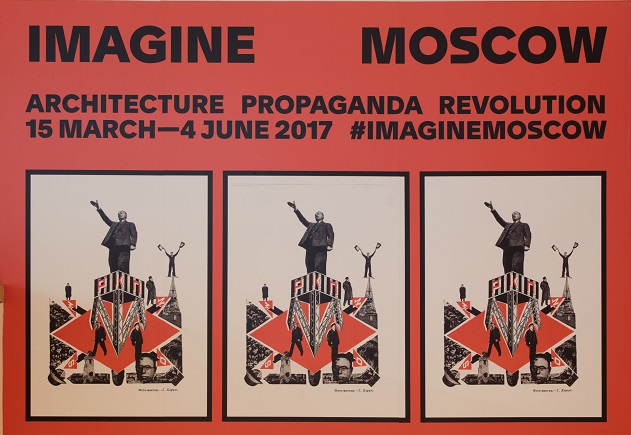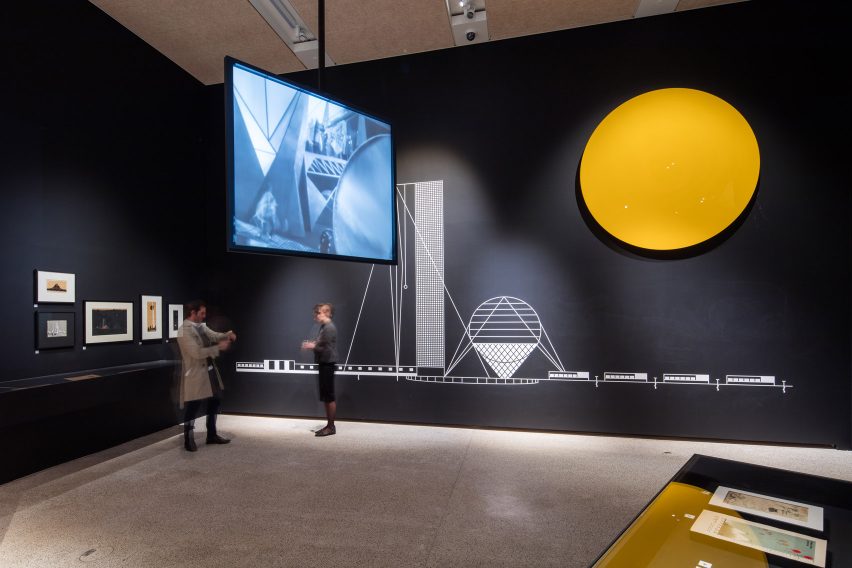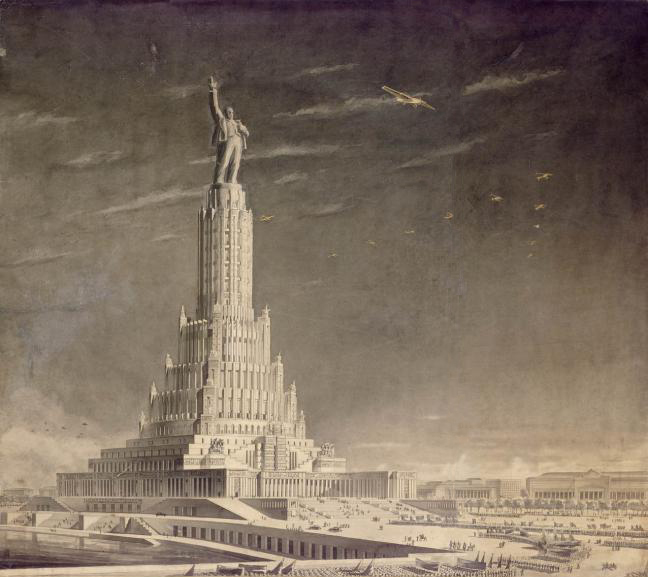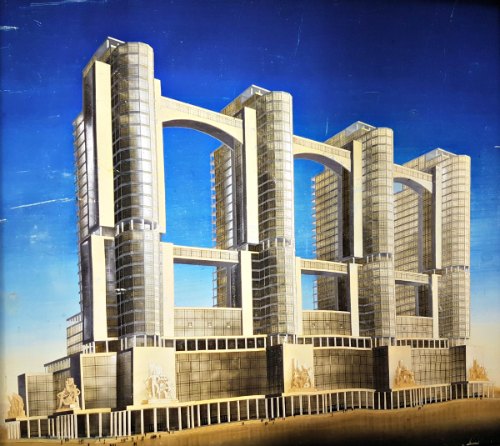Main author
Michael BrooksImagine Moscow exhibition
In March 2017, Designing Buildings Wiki went to the London Design Museum to see the Imagine Moscow exhibition, marking the centenary of the Russian Revolution.
The exhibition presents six different ‘visions of Moscow’ imagined by architects and designers from 1917 until the early-1930s, a heady and exciting post-revolutionary era as the possibilities of the new ‘scientific society’ became clear. The vaulting ambition of this new generation is easily grasped in the rarely-seen material gathered for the displays.
Whether it’s the Supremacist artworks exploring new dimensions and patterns, or pro-literature propaganda posters as part of the new educatory push, there is the inescapable impression of a society’s utopian muscles being flexed, but that would atrophy in just a few years with the technocratic bureaucracy of Stalin.
The exhibition focuses on six key projects that exemplify the heights of ambition:
- Communal House: A scheme to introduce communal housing that would eliminate the nuclear family.
- Cloud Iron: A network of horizontal skyscrapers containing offices and apartments.
- Lenin Institute: An enormous library that would serve as the ‘accumulated knowledge’ of the human race.
- Health Factory: A Black Sea retreat that would provide respite and leisure for urban workers.
- Commissariat of Heavy Industry: A building that would celebrate the importance of industry to socialism.
- Palace of the Soviets: A grand monument to Lenin, and the tallest building in the world.
The exhibition succeeds in capturing the sense of exhilaration and dynamism inherent in these projects, with large-scale illustrations and, in the case of the Palace of the Soviets, a giant replica of the forefinger for the 100 m-high statue of Lenin that would stand tall over Moscow.
This, and the fascinating section on the design competition for Lenin’s Red Square mausoleum, reveal the idolatry and hero-worship as, despite the Soviet Union’s technological and modernist aspirations, just another form of religion.
The exhibition serves as a welcome reminder of a time when architects, designers and engineers genuinely believed they could remake society and, as a result, human beings themselves.
Even though the USSR and its methods have long since been discredited – the section on the rigid planning of daily routine amply demonstrates the totalitarian nightmare that was being created – it should still perhaps be considered that for architecture to have any kind of positive influence on society it needs something of the same towering ambition and imagination.
Imagine Moscow runs until the 4th June 2017.
For more information, see Design Museum.
[edit] Related articles on Designing Buildings Wiki
- Bridge Engineering exhibition
- Buildings that were never realised.
- Constructivist architecture.
- Engineering the World - VandA Museum
- London Design Museum.
- Nowa Huta - Communist tour review.
- Owen Hatherley - Landscapes of Communism.
- Socialist realism in a post-war Czechoslovak new town.
- Spomeniks.
- St. Basil’s Cathedral.
- The Japanese House: Architecture and Life after 1945.
- The Kremlin.
Featured articles and news
RTPI leader to become new CIOB Chief Executive Officer
Dr Victoria Hills MRTPI, FICE to take over after Caroline Gumble’s departure.
Social and affordable housing, a long term plan for delivery
The “Delivering a Decade of Renewal for Social and Affordable Housing” strategy sets out future path.
A change to adoptive architecture
Effects of global weather warming on architectural detailing, material choice and human interaction.
The proposed publicly owned and backed subsidiary of Homes England, to facilitate new homes.
How big is the problem and what can we do to mitigate the effects?
Overheating guidance and tools for building designers
A number of cool guides to help with the heat.
The UK's Modern Industrial Strategy: A 10 year plan
Previous consultation criticism, current key elements and general support with some persisting reservations.
Building Safety Regulator reforms
New roles, new staff and a new fast track service pave the way for a single construction regulator.
Architectural Technologist CPDs and Communications
CIAT CPD… and how you can do it!
Cooling centres and cool spaces
Managing extreme heat in cities by directing the public to places for heat stress relief and water sources.
Winter gardens: A brief history and warm variations
Extending the season with glass in different forms and terms.
Restoring Great Yarmouth's Winter Gardens
Transforming one of the least sustainable constructions imaginable.
Construction Skills Mission Board launch sector drive
Newly formed government and industry collaboration set strategy for recruiting an additional 100,000 construction workers a year.
New Architects Code comes into effect in September 2025
ARB Architects Code of Conduct and Practice available with ongoing consultation regarding guidance.
Welsh Skills Body (Medr) launches ambitious plan
The new skills body brings together funding and regulation of tertiary education and research for the devolved nation.
Paul Gandy FCIOB announced as next CIOB President
Former Tilbury Douglas CEO takes helm.
UK Infrastructure: A 10 Year Strategy. In brief with reactions
With the National Infrastructure and Service Transformation Authority (NISTA).



























